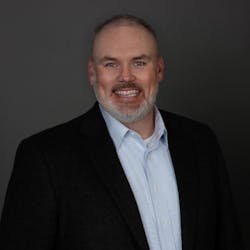After the Texas Storm: Time to Shift the Narrative on Energy Infrastructure
Kelly Land, business development manager, commercial assets at PowerSecure, shares insights gleaned from the winter storm that took Texas by surprise, crippling the state’s energy infrastructure.
An unanticipated Winter Storm Uri arrived in Texas in early 2021, crippling infrastructure across the state. The combination of record winter peak energy demand coupled with weather related energy supply disruptions across the state’s Electric Reliability Council of Texas (ERCOT) grid system led to “brownouts” that directly or indirectly resulted in downstream infrastructure disruptions in public and private sectors of the economy. All of this placed the health and well-being of Texans at risk.
The conversation around this event was, and still is, challenging. Public officials and pundits painstakingly tried to familiarize themselves with power market terminology and the complex ERCOT stakeholder landscape, a task that took many of us years to master. As the crisis continued to escalate, political and industry special interests advocated for their constituencies and against rival constituencies, spreading falsehoods about this catastrophic event. These “bad-faith” actors took root as the — to use an industry term — prime movers of the narrative.
Fossil fuel vs. renewable generation. Energy market vs. capacity market. “Stay in ERCOT” vs. “Leave for MISO.” The discourse surrounding Winter Storm Uri was a handful of zero-sum games and the opposite of productive.
Let’s back up a bit and talk about the fundamentals of an electricity market at a high level. The goal of any grid manager, including ERCOT, is to maintain an energy balance between energy supply and energy demand, resulting in a steady system frequency of 60 Hz. In order to accomplish this, supply and demand must be managed. Electricity producers, or generators, are on the supply side of the market. This group is made up of fossil fuel, nuclear and renewable generation resources. Conversely, if you pay a rate for energy as an industrial, commercial or residential consumer, you are on the demand side of the industry. Transmission and distribution is the connective tissue between the supply and demand sides.
The fact is, during Winter Storm Uri, supply and demand were bilaterally decoupled from each other in a way that required drastic action by ERCOT to maintain control of the energy balance. According to ERCOT, “loss of generation was 52,277 MW (approximately 48.6%) at the highest point,” and a “20,000 MW peak load shed” was required.
If the goal is to ensure this never happens again, it will require a full-spectrum approach. The scope of any review or investigation should cover supply-side, demand-side, transmission, distribution, management, oversight, etc.
The narrative, to date, has centered around supply-side solutions. I’d like to insert a co-narrative into the debate. Demand-side management programs such as emergency response service, load resource and 4-Coincident Peak (4CP) are just three commercial examples of many demand-reduction programs that should be reviewed to determine if improvements are warranted. Emergency response service and load resource programs may need larger budgets. 4CP could become an 8CP or a 12CP program incentivized through an avoidance of a higher demand charge than exists today. I don’t pretend to know the answer, but I do know that during the early morning hours while Winter Storm Uri‘s arctic blast swept across Texas with record breaking temperatures and damaging ice, these programs — with zero public awareness — provided grid operators with approximately 1,000 MW of load and capacity resources. Peak load shed during this event was 22,000 MW. This is a solvable problem.
Texans are good people. We value the independence of our Texas community, but we’re compassionate about the most vulnerable among us. We take care of each other. We need to talk about supply-side solutions, and we absolutely need to empower 26 million Texans and thousands of businesses to be part of solving this problem.
Kelly Land is business development manager, Commercial Assets at PowerSecure.
